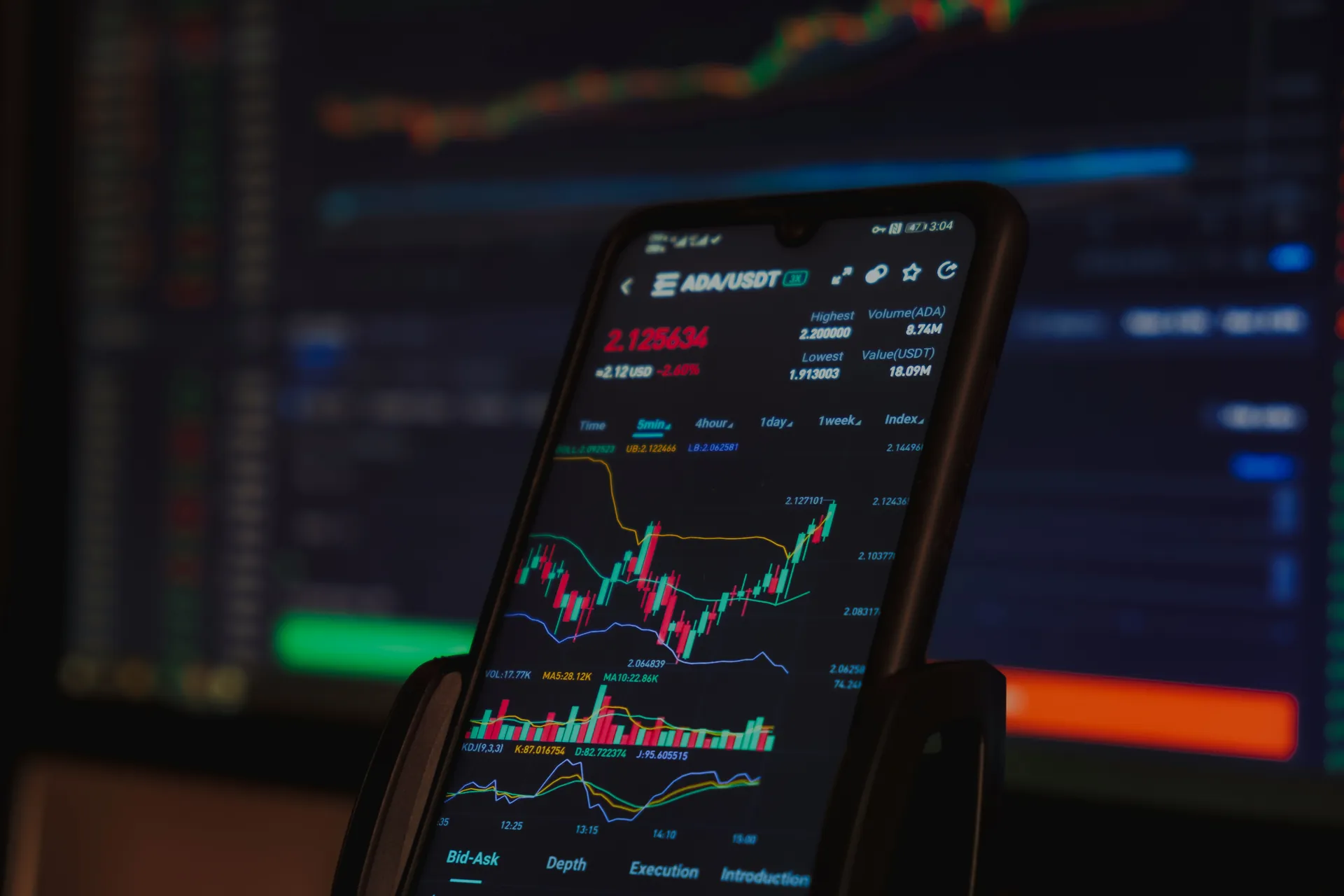As the cryptocurrency market continues to evolve, investors are seeking ways to benefit from digital assets like Bitcoin and Ethereum without the complexities of managing these cryptocurrencies directly. A key development in this space is the rise of Crypto ETFs (Exchange-Traded Funds) and futures contracts.
For newcomers to crypto investing, understanding these financial products might seem challenging. However, they provide a regulated and more accessible way to engage with the cryptocurrency market.
Crypto ETFs, particularly spot Bitcoin ETFs, have become a game-changer for retail and institutional investors alike. These funds enable investments in Bitcoin or other cryptocurrencies through traditional brokerage accounts, bypassing the need to manage digital wallets or secure private keys. This streamlined approach broadens access to cryptocurrency price movements using the familiar ETF structure.
In this article, we will explore Crypto ETFs and futures, detailing their workings and essential considerations for investors. Whether you’re experienced or new, this guide will help you navigate this dynamic market.
Understanding Crypto ETFs

What is a Crypto ETF?
A crypto ETF, or cryptocurrency Exchange-Traded Fund, is a financial product designed to provide investors with exposure to the performance of one or more cryptocurrencies, such as Bitcoin or Ethereum, without the need to directly own or manage these digital assets. These funds operate similarly to traditional ETFs, trading on stock exchanges and allowing investors to buy and sell shares throughout the trading day at market-determined prices. Crypto ETFs can track the price of a single cryptocurrency, a basket of cryptocurrencies, or even related technologies like blockchain, offering a regulated and accessible way to participate in the digital asset market.
Types of Crypto ETFs: Spot vs. Futures
Crypto ETFs can be broadly categorized into two main types: spot ETFs and futures ETFs, each with distinct characteristics and implications for investors.
Spot ETFs
Spot Bitcoin ETFs, for example, aim to track the market price of Bitcoin by physically holding the underlying cryptocurrency. This means that the fund manager purchases and stores the actual Bitcoins in secure digital wallets. As a result, the performance of spot ETFs tends to closely mirror the spot price of the cryptocurrency, providing a more direct exposure to its price movements. Spot ETFs are generally more liquid and have a simpler structure compared to futures-based ETFs.
Futures ETFs
Bitcoin futures ETFs, on the other hand, provide exposure to the cryptocurrency’s price through Bitcoin futures contracts. These contracts stipulate that two parties will exchange a specific amount of Bitcoins for a particular price on a predetermined date. Futures ETFs do not hold the actual cryptocurrency but instead use these contracts to track the price movements. However, this approach can lead to tracking errors due to the differences between the futures contract prices and the spot market price of Bitcoin. Additionally, futures ETFs must periodically “roll over” their contracts, which can result in inefficiencies and additional transaction costs.
Advantages and Disadvantages of Crypto ETFs
Advantages
- Ease of Access: Crypto ETFs make it simple for investors to gain exposure to cryptocurrencies without the technical complexities of managing digital wallets or private keys.
- Regulatory Oversight: Operating within regulated financial environments, crypto ETFs offer enhanced investor protections and transparency, contributing to a more secure investment landscape.
- Diversification and Liquidity: Crypto ETFs provide diversification benefits by allowing investors to spread their risk across different digital assets. They also ensure high liquidity, enabling quick responses to market movements.
- Professional Management: Investors benefit from professional fund management, which can mitigate some of the risks associated with direct cryptocurrency ownership.
Disadvantages
- Volatility and Market Risk: Crypto ETFs are exposed to the high volatility of the cryptocurrency market, which can significantly impact their value. Regulatory changes can also affect the performance of these funds.
- Higher Fees: The management fees of crypto ETFs are often higher than those of traditional ETFs, which can reduce investment returns over time.
- Tracking Error: Futures-based ETFs can experience tracking errors due to the differences between the futures contract prices and the spot market price of the cryptocurrency. This can lead to discrepancies in the ETF’s performance compared to the underlying asset.
- Indirect Ownership: Investors in crypto ETFs do not own the underlying digital currencies directly, which could result in a lack of control and potential benefits loss.
Exploring Crypto Futures

How Do Crypto Futures Work?
Crypto futures contracts are agreements to buy or sell a cryptocurrency at a specified price on a specific date in the future. These contracts allow investors to speculate on the future price of cryptocurrencies like Bitcoin and Ethereum or hedge against potential price fluctuations. Essentially, a crypto futures contract is a derivative instrument that tracks the value of an underlying cryptocurrency.
For instance, a Bitcoin futures contract traded on the Chicago Mercantile Exchange (CME) represents 5 Bitcoins and is settled in cash based on the CME CF Bitcoin Reference Rate. At the expiration of the contract, the parties involved do not exchange the actual Bitcoins but instead settle the difference in cash.
Crypto futures serve multiple purposes, including hedging, speculation, and arbitrage:
- Hedging: Futures are used to mitigate the risk of price fluctuations in the underlying asset.
- Speculation: Traders can profit from predictions about future price movements.
- Arbitrage: Exploiting price differences between different markets or exchanges.
Differences Between Physical and Cash-Settled Futures
Crypto futures can be either physically settled or cash-settled, each with distinct implications for traders.
Physical Settlement
Physically settled futures, also known as asset-settled futures, require the actual delivery of the underlying cryptocurrency at the expiration date. For example, Bakkt’s monthly Bitcoin futures contract settles by delivering the actual Bitcoins to the buyer and receiving the corresponding USD amount from the seller. Although less common, this type of settlement is used in certain exchanges where physical delivery is feasible.
Cash Settlement
Cash-settled futures, on the other hand, do not involve the physical delivery of the cryptocurrency. Instead, the profit or loss is settled in cash based on the difference between the contract price and the spot price of the cryptocurrency at the time of expiration. This method is more prevalent and preferred by many traders because it simplifies the settlement process, reduces costs associated with physical delivery, and increases market efficiency.
Risks and Rewards of Trading Crypto Futures
Trading crypto futures involves significant risks and potential rewards, making it important for investors to understand these aspects before engaging in such activities.
Risks
- High Volatility: Cryptocurrencies are known for their volatile price swings, which can result in substantial losses if the market moves against the trader’s position. The use of leverage in futures trading can amplify both gains and losses, increasing risk.
- Leverage: While leverage can magnify potential gains, it also heightens the risk of significant losses. Traders must carefully manage their positions to avoid margin calls and potential liquidation.
- Market Manipulation: The cryptocurrency market is susceptible to manipulation, leading to sudden and unpredictable price movements. This adds an extra layer of risk for traders relying on futures contracts.
Rewards
- Speculation Opportunities: Crypto futures enable traders to speculate on both upward and downward price movements, providing opportunities for profit in highly volatile markets. Traders can go long or short on futures contracts based on their market predictions.
- Hedging Benefits: For businesses and investors exposed to cryptocurrencies, futures contracts can be an effective tool for hedging against price volatility. By locking in prices through futures contracts, they can protect their assets from potential price drops.
- Diversification: Crypto futures can diversify investment portfolios, offering exposure to alternative assets that may not correlate with traditional asset classes. This helps manage overall portfolio risk and potentially enhances returns.
Regulatory Considerations and Market Trends

Current Regulatory Landscape
The regulatory environment plays a significant role in the development and acceptance of crypto ETFs and futures. Recent developments have been pivotal in shaping the current landscape. The U.S. Securities and Exchange Commission (SEC) has been a key player in this arena. The approval of spot Bitcoin ETFs in January 2024 marked a significant milestone, opening the door for broader investor participation in the cryptocurrency market. However, SEC Chairman Gary Gensler emphasized that this approval is specific to Bitcoin and does not imply a blanket approval for other cryptocurrencies or related products.
In addition, regulatory changes in both the U.S. and Canada are expected to influence the ETF industry. For instance, the new Life Insurance Capital Adequacy Test (LICAT) guidelines in Canada are set to reduce capital charges for life insurers holding fixed income ETFs, which could increase their adoption and indirectly support the growth of crypto ETFs by enhancing overall ETF market conditions.
The SEC is also considering the launch of ETF series of mutual funds, a structure that has been successful in other markets. If approved, this could lead to a surge in new ETF launches, including those focused on cryptocurrencies, further expanding the range of investment options available to investors.
Impact of Market Trends on Crypto ETFs and Futures
Market trends and investor sentiment significantly impact the performance and adoption of crypto ETFs and futures. The approval of spot Bitcoin ETFs has led to a substantial increase in investor interest and market activity. Daily ETF volumes have surged, with Bitcoin ETFs seeing nearly $10 billion in daily volume shortly after their launch. This increased activity has also driven up the price of Bitcoin, highlighting the interplay between ETF approvals and market dynamics.
The evolution of crypto ETFs is also driven by the demand for more nuanced and diversified products. For example, Bitwise has introduced “Trendwise” products that rotate between crypto and U.S. Treasurys based on crypto market price trends, aiming to boost risk-adjusted returns and reduce downside risk. Such innovative strategies reflect the market’s need for more sophisticated investment tools.
Moreover, the broader acceptance of cryptocurrencies as legitimate asset classes is driving institutional interest. As more investors seek to diversify their portfolios with digital assets, the demand for regulated and secure investment options like crypto ETFs is expected to rise. This trend is likely to continue, with potential approvals for ETFs based on other cryptocurrencies such as Solana, Ripple (XRP), and others, further expanding the crypto ETF market.
Political factors and regulatory shifts can also influence the market. For instance, changes in political leadership and their stance on cryptocurrencies can impact investor sentiment and regulatory decisions. The recent crypto rally following the election of a more crypto-friendly candidate is a testament to how political factors can shape market trends.
In conclusion, the regulatory landscape and market trends are intricately linked, with each influencing the other in complex ways. As the crypto ETF market continues to evolve, it is important for investors to stay informed about these developments to make informed investment decisions.
Conclusion
As we conclude our exploration of crypto ETFs and futures, it is important to remember the key differences and implications of these investment vehicles. Spot Bitcoin ETFs provide direct exposure to the underlying cryptocurrency, closely tracking its price movements. In contrast, Bitcoin futures ETFs rely on futures contracts, which can introduce tracking errors and additional costs such as roll premiums and management fees.
Understanding the regulatory landscape, including the recent approvals of spot Bitcoin ETFs, is vital for navigating these markets. The volatility and risks associated with cryptocurrencies, along with the potential for regulatory changes, must be carefully considered.
For investors looking to access the cryptocurrency market, crypto ETFs and futures offer a regulated and accessible pathway. However, it is essential to make informed decisions by assessing your risk tolerance, understanding the markets, and carefully reviewing the fees and risks involved.
As the crypto asset ecosystem continues to evolve, staying informed and adapting to market trends will be pivotal. Whether you are a seasoned investor or just beginning to explore digital assets, the opportunities presented by crypto ETFs and futures are worth considering. Take the time to educate yourself, plan your investment strategy, and consult with financial advisors if necessary. With the right approach, you can leverage these innovative financial products to diversify your portfolio and potentially capitalize on the growth of the cryptocurrency market.


